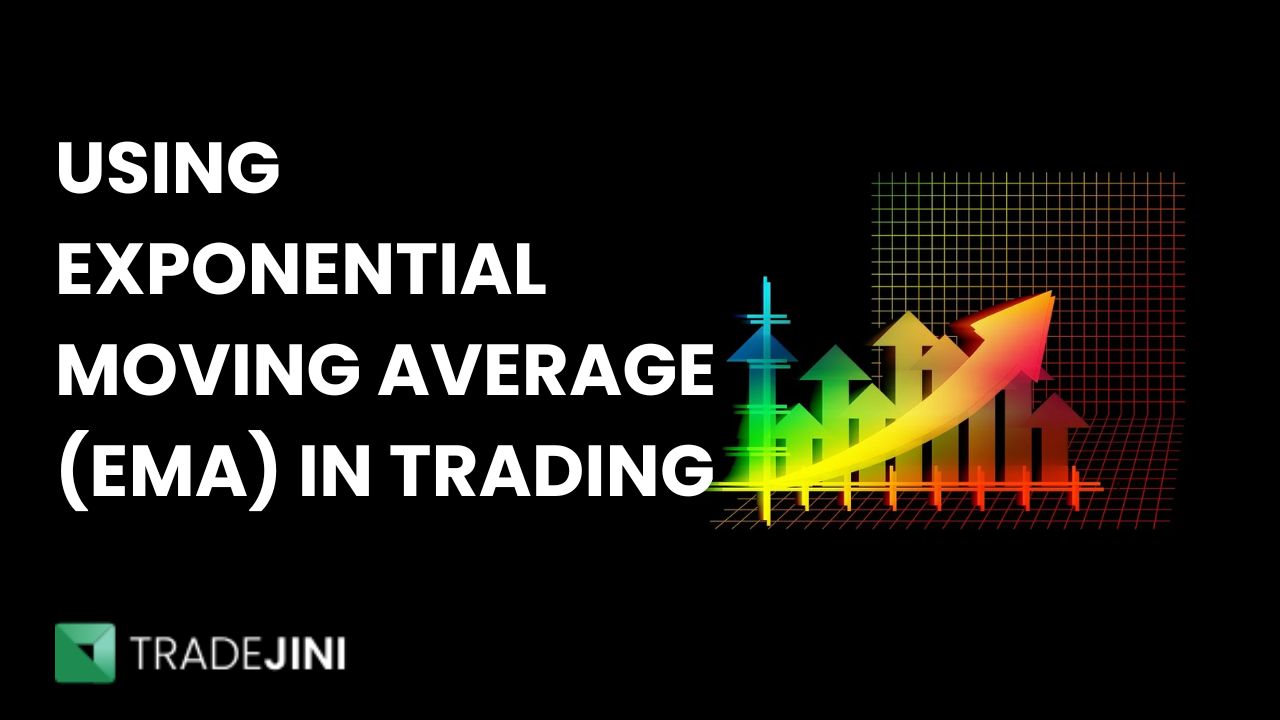For people new to the world of trading, one may come across a lot of words that sound Greek and Latin because a lot of the financial jargon used by finance experts is technical. If you are an amateur and starting fresh as a trader, getting well-equipped with some of the indicators might come in handy, like the ADX indicator. One such pivotal indicator is the Exponential Moving Average (EMA).
In this comprehensive guide, we will delve into the intricacies of EMA, its significance in the stock market, and how traders can effectively utilise it in their trading strategies.
What is EMA in Trading? Definition of EMA in Trading:
EMA, short for Exponential Moving Average, is a technical indicator used in stock market trading to analyse price trends over a specific period. Unlike the Simple Moving Average (SMA) which assigns equal weight to all data points, EMA places more emphasis on recent prices, making it more responsive to price changes. EMA is calculated by applying a smoothing factor to the closing prices of a stock, giving greater weight to the most recent data points.
Example to Explain EMA:
Let's consider a hypothetical scenario where we calculate a 5-day EMA for a stock's closing prices:
Day 1: Closing Price = ₹100
Day 2: Closing Price = ₹105
Day 3: Closing Price = ₹110
Day 4: Closing Price = ₹108
Day 5: Closing Price = ₹115
To calculate the 5-day EMA:
Initial SMA Calculation:
First, we calculate the Simple Moving Average (SMA) for the first 5 days.
SMA = (100 + 105 + 110 + 108 + 115) / 5 = ₹107.60
Multiplier Calculation:
Next, we determine the multiplier based on the selected number of periods (5-day EMA in this case).
Multiplier = 2 / (5 + 1) = 0.33
EMA Calculation:
For the first EMA calculation, we take the most recent closing price (Day 5) and apply the smoothing factor.
EMA = (115 - 107.60) x 0.33 + 107.60 = ₹111.25
Subsequent EMA Calculations:
For the following days, we continue to update the EMA by incorporating the latest closing prices and applying the multiplier based on the selected period.
In this example, the 5-day EMA provides traders with a smoothed average of the stock's price movements, offering insights into the short-term trend direction. The EMA reacts more quickly to recent price changes compared to SMA, making it a valuable tool for identifying potential buying or selling opportunities in the stock market.
Learn About: BTST (Buy Today, Sell Tomorrow) Strategy: Overview, Advantages, and Disadvantages
Key Characteristics of EMA:
EMA reacts swiftly to price changes, offering traders timely insights into market trends.
It is particularly useful for identifying the direction of a stock's price movement over a specified period.
Responsive to Price Changes:
One of the key characteristics of EMA is its responsiveness to price movements. EMA gives more weight to recent data points, making it quick to react to changes in the stock price.
As a result, EMA is considered more dynamic than Simple Moving Average (SMA) and provides traders with timely signals about evolving market trends.
Trend Identification:
EMA is widely used for trend identification in trading. By smoothing out price fluctuations and focusing on recent prices, EMA helps traders discern the direction of the prevailing trend.
A rising EMA indicates an uptrend, while a declining EMA suggests a downtrend in the stock's price movement.
Crossover Signals:
EMA crossovers are significant signals generated when two EMAs with different periods intersect. A bullish crossover occurs when a shorter EMA crosses above a longer EMA, indicating a potential uptrend.
Conversely, a bearish crossover happens when a shorter EMA crosses below a longer EMA, signalling a potential downtrend in the stock price.
Support and Resistance Levels:
EMA levels can act as dynamic support and resistance zones for a stock. Traders often use EMA values as reference points to identify potential entry and exit levels for their trades.
When the stock price approaches the EMA line, it may encounter support (if above EMA) or resistance (if below EMA), influencing traders' decisions.
Versatility in Timeframes:
EMA can be applied across various timeframes, ranging from short-term intraday trading to long-term investment strategies. Traders can adjust the EMA period to suit their preferred trading style and time horizon.
Shorter EMA periods (e.g., 9 or 12 days) are commonly used for short-term trading, while longer EMA periods (e.g., 50 or 200 days) are favoured by long-term investors.
Risk Management Tool:
EMA can serve as a valuable tool for risk management in trading. Traders often use EMA levels to set stop-loss orders, helping them limit potential losses and protect their capital.
By trailing stop-loss orders based on EMA values, traders can secure profits as the stock price moves in their favour, while also managing downside risk effectively.
Learn About: Algo Trading: Meaning, How It Works, Benefits
Significance of EMA in Stock Market
Trend Identification with EMA:
EMA aids traders in recognising trends by smoothing out price fluctuations and highlighting the prevailing market direction.
A rising EMA suggests an uptrend, while a declining EMA indicates a downtrend in stock prices.
Support and Resistance Levels:
EMA serves as dynamic support or resistance levels for stocks, assisting traders in pinpointing potential entry and exit points.
Traders often use EMA crossovers to signal buying or selling opportunities when the stock price intersects with the EMA line.
How to Use Exponential Moving Average in Trading
Calculating EMA:
The formula for EMA calculation involves utilising the closing prices of a stock over a specified timeframe and applying a smoothing factor.
EMA = (Closing Price - EMA(previous day)) x Multiplier + EMA(previous day)
Selecting the Optimal Period:
Choosing the appropriate period for EMA calculation depends on the trader's strategy and investment horizon.
Shorter EMA periods (e.g., 9 or 12 days) are more responsive to recent price changes, while longer periods (e.g., 50 or 200 days) offer a broader perspective on market trends.
EMA Trading Strategies:
EMA Crossovers: Traders look for bullish signals when the shorter EMA crosses above the longer EMA, and vice versa for bearish signals.
EMA Support and Resistance: EMA levels can act as critical support and resistance zones, guiding traders in making decisions based on price action around these levels.
Risk Management with EMA:
Incorporating EMA into your trading strategy can help in setting effective stop-loss levels based on the EMA line to manage risk prudently.
Traders can utilise EMA to trail their stop-loss orders as the stock price moves favourably, locking in profits along the way.
Conclusion
In conclusion, mastering EMA in trading and integrating it into your trading toolkit can elevate your decision-making prowess in the stock market. By leveraging the power of Exponential Moving Average to identify trends, support and resistance levels, and trading signals, you can enhance your trading performance and navigate market fluctuations with greater precision. Remember to tailor your EMA parameters to align with your trading style and complement technical indicators with fundamental analysis for a holistic trading approach.
In summary, EMA serves as a potent ally for traders seeking to make informed trading decisions and maximise their profits in the dynamic landscape of the stock market.
Remember to practice patience and diligence in applying EMA strategies, and always validate your approaches through backtesting to ensure consistency and effectiveness.
Happy trading with Tradejini and may your journey with EMA be rewarding and fruitful in the Indian stock market!
This detailed guide aims to equip Indian traders with valuable insights into utilising EMA effectively in their trading endeavours.
Also Read: Gap Up and Gap Down Strategy: A Guide to Gap Trading



